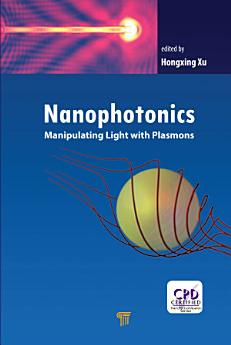Nanophotonics: Manipulating Light with Plasmons
À propos de cet e-book
Nanophotonics: Manipulating Light with Plasmons
starts with the general physics of surface plasmons and a brief introduction to the most prominent research topics, followed by a discussion of computational techniques for light scattering by small particles. Then, a few special topics are highlighted, including surfaceenhanced Raman scattering, optical nanoantennas, optical forces, plasmonic waveguides and circuits, and gain-assisted plasmon resonances and propagation.The book discusses the fundamental and representative properties of both localized surface plasmons and propagating surface plasmons. It explains various phenomena and mechanisms using elegant model systems with well-defined structures, is illustrated throughout with excellent figures, and contains an extensive list of references at the end of each chapter. It will help graduate-level students and researchers in nanophotonics, physics, chemistry, materials science, nanoscience and nanotechnology, and electrical and electronic engineering get a quick introduction to this field.
À propos de l'auteur
Hongxing Xu is professor of physics at Wuhan University, China. He received his BS degree in physics from Peking University, China, in 1992, and PhD degree from Chalmers University of Technology, Sweden, in 2002. From 2005 to 2014, he was a professor at the Institute of Physics, Chinese Academy of Sciences, China. His research interests include plasmonics, nanophotonics, surface-enhanced spectroscopy, and single-molecule spectroscopy.




